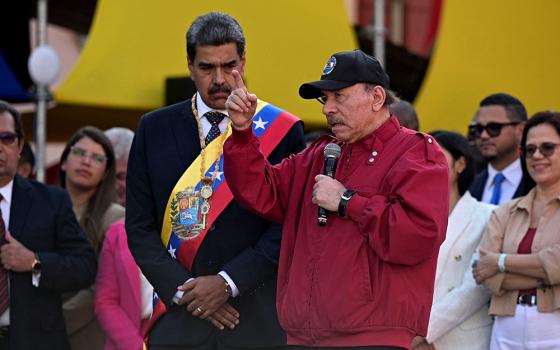Over the weekend I was marching at the School of the Americas Watch protest at Fort Benning, Ga. Of course, the School of the Americas has had a name change. It is now the Western Hemispheric Institute for Security Cooperation (WHINSEC). Today it is a clear symbol but not the reality of training foreign militaries. WHINSEC has significant U.S. civilian oversight and even some tracking of how the troops use their training. The other thousands of training courses offered each year get little or no scrutiny.
For example, most of the highly placed military and former military in the Honduran government have taken U.S. military courses somewhere in the world. I’ve also seen reports that the police unit responsible for the disappearance of the 43 students from Ayotzinapa had U.S. military training. They are supposed to take a course on democracy whenever they participate in U.S. training, but we don’t know whether they take those classes or what is being taught.
We do know that the military part of the training teaches the use of weapons and various military operational strategies and tactics. And we know that graduates of these courses are sought after by drug cartels and other non-governmental organizations. Our military training is one of those gifts that keep on giving.
On Saturday morning a little over a thousand marchers walked a mile and a half to the Stewart Detention Center in Lumpkin, Ga., operated by the Corrections Corporation of America. It holds about 1,800 men, mostly immigrants without documents, but it also serves as the local jail for several counties. We heard some moving speeches and excellent music. Then five protesters walked onto prison property and were arrested. They have since been released on bond. Walking back, several of us wished all thousand demonstrators had been prepared to walk onto the prison grounds. (A note: that’s the sort of preparation demonstrators in St. Louis are receiving. Indeed, a month ago at a Clayton protest several hundred of us did leave the protected protest area to march for half an hour through the city streets. No arrests were made.)
Saturday afternoon we spent outside the Fort Benning gates, listening to more short speeches and good music. Attending an SOAW rally raises one’s standards for rallies. That evening there were workshops at the Convention Center, but I retired to my motel room.
It rained all day Sunday. About 2,000 people gathered again at the gates and marched in a funeral procession, carrying crosses bearing the names of persons killed by SOA-trained troops. Singers chanted the names of the dead as we marched. When we reached the gate, we put our small crosses into the chain-link fence that has been erected in front of the gate, topped with barbed wired. Notwithstanding the double fence and wire, 83-year-old Eve Tetaz found a way to cross the line, and Nashua Chantal climbed over that barbed wire to cross the line for the third time.
The numbers at the SOAW protest have reached almost 20,000 but a couple of years ago the Jesuits withdrew the support of most of their colleges and high schools. It’s too bad the numbers are down, but more important is the loss for those students of the experience of participating in a passionate action for justice.
I’ve participated in the protest at least ten or 12 years and tears don’t rise so readily to my eyes anymore. I told one of the women of our group how significant it is that the police there don’t wear riot gear, and she immediately went over to them to say thank you for their respect for our commitment to nonviolence. I was grateful for her new energy.
Then, later, I walked another group member back behind the stage to explain the funeral procession route and show her the fence. Some college students were back there, preparing the coffins to be carried. Tears did well up in my eyes then, in gratitude and hope for these young people carrying out such a solemn task.




